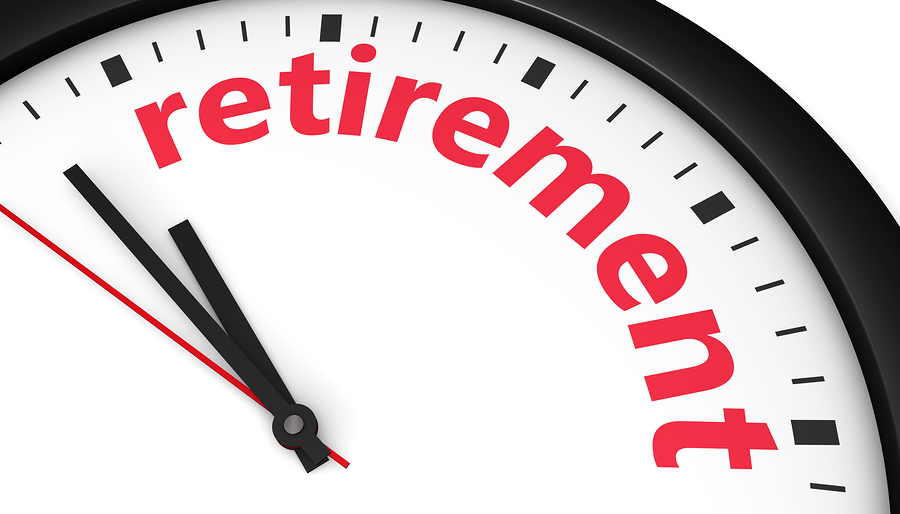Posted on Friday, 17th February 2023 by Dennis Damp
 Print This Post
Print This Post
Forward this to others that may find this information helpful.
They can sign-up to receive my free Retirement Planning Newsletter.
On December 29, 2022, the Retirement Enhancement (SECURE) 2.0 Act of 2022 was signed into law. This second installation of the 2019 SECURE Act introduces several changes affecting the Thrift Savings Plan. This legislation will directly affect plan participants.

I held off writing an article about these changes until the Thrift Board published guidance on the subject. The TSP is an Individual Retirement Account (IRC) under Internal Revenue Code (IRC) § 401(a). Therefore, certain rules and regulations associated with IRAs and 401 (k) plans may not apply to the TSP.
Required Minimum Distributions (RMDs)
The age required to start RMDs was raised from 72 to 73 starting on January 1, 2023, and then to age 75 starting on January 1, 2033.
Under SECURE 2.0, retirement account holders who turn 72 on or after January 1, 2023, need to begin taking RMDs at age 73. Anyone that turned 72 on or before December 31, 2022, is not affected by this change and needs to continue taking their RMDs as scheduled.
The TSP has issued limited guidance with more to follow including the information in the previous paragraph. However, under the new law, those turning 72 in 2023 can now hold off on taking the first RMD until December 31, 2024―a full year later. You also have the one‐time IRS option to delay that first RMD to no later than April 1, 2025. However, if you exercise that option and wait until April 1, 2025, you’ll be required to take two distributions that year, satisfying your first and second RMD.
Originally, ROTH accounts under the 401(a) laws were subject to RMDs, this has fortunately changed under the new 2022 SECURE Act. TSP Participants are no longer required to take ROTH RMDs prior to the account owner’s death.
Catch-Up Contributions
Changes to participant catch-up contributions begins January 1, 2024. This change allows account holders with wages below $145,000 in the preceding year to choose traditional or Roth accounts for catch-up contributions. Federal payroll offices were notified of these changes.
If the participant’s wages exceed $145,000 in the preceding year, all catch-up contributions must be treated as Roth. Your contributions will not be tax deferred like the traditional 401(a) contributions are.
Beginning on January 1, 2025, the catch-up contribution limit for participants ages 60-63 will be increased to the greater of (1) $10,000 or (2) 50% more than the regular catch-up amount in 2025.
Decreased Penalties
The new law dramatically reduces the penalty for failing to take an RMD down from 50% to 25% of the mandatory withdrawal amount, still high by any standard. However, the penalty drops to 10% if the amount you missed is withdrawn, and file a corrected tax return with the IRS within the applicable period.
I-Bond Update
Rosemary asked if she had to wait a year after purchasing an I-Bond before buying another. She bought one last April and thought she had to wait until April of 2023 to purchase another.
You can buy up to $10,000 each calendar year online through Treasury Direct and an additional $5,000 in paper bonds with your income tax return. Anyone can purchase up to $10,000 in new I-Bonds on the first of day of the year even if you bought one in December of the previous year.
I purposely overpaid my estimated quarterly federal income taxes in 2021 with the intention of taking advantage of this option. It worked; last year when the I-Bond rate was 9.62% the Treasury sent me 12 paper bonds in the mail! They sent a mix of bonds ranging from as low as $50 to as high as $1,000.
I overpaid my estimated income taxes again last year in order to purchase another $5,000 in paper I-bonds this year. Where else can you get a 6.89% return on your investment today! I’m waiting for one more tax form; it looks like I’ll be doing it again.
Helpful Retirement Planning Tools
- Retirement Planning for Federal Employees & Annuitants
- The Ultimate Retirement Planning Guide – Start Now
- Which Way is Up – A Retiree’s Conundrum
- Is the Stock Market Keeping You Up at Night?
- TSP Guide
- TSP Considerations
- Budget Work Sheet
- Social Security Guide
Disclaimer: The information provided may not cover all aspect of unique or special circumstances, federal regulations, medical procedures, and benefit information are subject to change. To ensure the accuracy of this information, contact relevant parties for assistance including OPM’s retirement center. Over time, various dynamic economic factors relied upon as a basis for this article may change.
The advice and strategies contained herein may not be suitable for your situation and this service is not affiliated with OPM or any federal entity. You should consult with a financial, medical or human resource professional where appropriate. Neither the publisher or author shall be liable for any loss or any other commercial damages, including but not limited to special, incidental, consequential, or other damages.
Last 5 posts by Dennis Damp
- Too Much too Soon & Cable TV Subscription Costs - July 26th, 2024
- The Art of Downsizing – Why, Where, & When? - July 12th, 2024
- 2025 COLA Estimates & Retirement Processing Update - June 28th, 2024
- The 2024 Election - Voting Early This November - June 15th, 2024
- These Boots Are Made for Walking – That’s Just What I'll Do! - May 26th, 2024
- Federal & Postal Employees Health Benefits Update - May 17th, 2024
- Postal Service Health Benefit (PSHB) Providers Announced - May 3rd, 2024
- Down But Not Out – Imagine if This Was You! - April 12th, 2024
- Is Working in Retirement A Necessity Today? - April 5th, 2024
- Retirement Progression – One Day at a Time to Infinity - March 15th, 2024
- Fixed Income Investment Update – Bonds & More - March 8th, 2024
- Updated Guidance, Clarifications, & Observations - February 23rd, 2024
Tags: Catch-Up Contributions, I Bonds, Secure Act 2.0, TSP, TSP RMDs
Posted in ANNUITIES / ELIGIBILITY, BENEFITS / INSURANCE, ESTATE PLANNING, FINANCE / TIP, RETIREMENT CONCERNS, SURVIVOR INFORMATION | Comments (0)
 Print This Post
Print This Post

